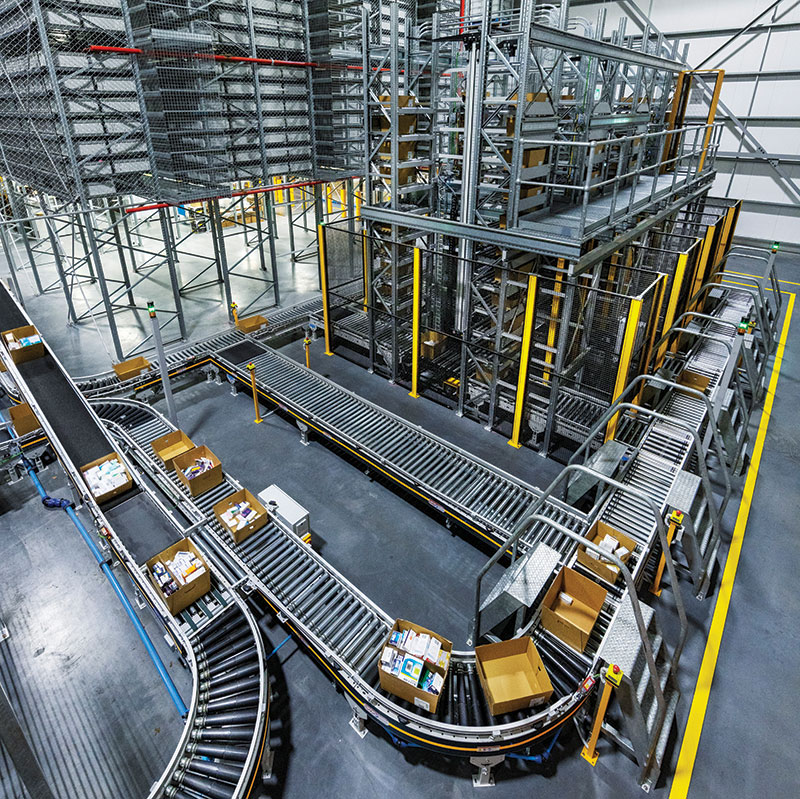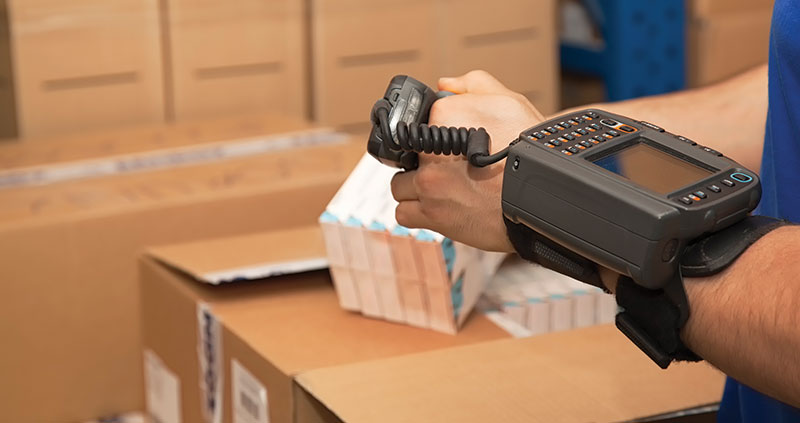Pharma industry trends and solutions in 2021
As pharmaceutical manufacturers and distributors rethink their fulfillment operations, they’re infusing technology, automation and robotics into those fast-paced facilities.
Like all fulfillment and distribution operations right now, the pharmaceutical industry is dealing with a host of new pressures. Not only is the world looking to it for help eradicating a global pandemic, but the ways in which the sector gets drugs out to the patients who need them is evolving.
Concurrently, the industry is dealing with new regulatory rules and changing customer preferences. These and other trends not only impact pharmaceutical manufacturers themselves, but they’re also changing the way the top three medical distribution firms (AmerisourceBergen [ABC], Cardinal Health and McKesson) run their supply chains.
The labor shortage is also forcing pharmaceutical companies to rethink their current distribution operations and invest in more automation to offset the problem. “Everyone is trying to reduce their reliance on labor, pharmaceuticals included,” says Daniel Johnson, account executive at Fortna.
This is happening across the board right now, with the events of 2020 pushing it along even further. Companies want to be able to automate pallet handling, case handling, and other tasks, Johnson says, and they’re increasingly looking to automated storage and retrieval systems (AS/RS), automatic guided vehicles (AGVs), and goods-to-person technologies to help them achieve those goals.
Johnson says there’s also been a “diversification of processes” within the warehouse and DC itself, where the transition to online ordering is impacting how manufacturers and distributors get their products out to consumers. For example, some manufacturers are looking at how to take over some of the distribution processes traditionally handled by wholesale distributors or pharmacies.
“They’re looking for ways to pull some of that business back,” says Johnson, “with the goal of adding more value for customers as the industry continues to tighten up and more competition emerges—a.k.a. Amazon.”
Embracing the e-commerce channel
One of the biggest shifts taking place in pharmaceutical distribution right now is that more and more consumers are buying over-the-counter (OTC) products that are non-controlled online. This started pre-Covid, but the pandemic revved up that engine and now the onus is on the pharma distributors to meet this new demand. “The pharmaceutical industry is embracing the e-commerce channel for non-controlled drugs,” says Adam Brown, global market development director at Dematic, “which means that about 80% of the drugs used in day-to-day life can be ordered online now.”

To accommodate the shift to buying more over-the-counter products online, more companies are using central fill solutions that leverage automation and robotics for the counting, filling and dispensing of medications automatically.
To accommodate this shift, more companies are using central fill solutions that leverage automation and robotics for the counting, filling and dispensing of medications automatically. McKesson’s Central Fill as a Service (CFaaS), for example, allows retail pharmacies to use central fill without an investment in equipment, inventory or staffing (other than a pharmacist). Pharmacies that use central fill get increased efficiencies, reduced costs and more time to focus on patient care.
When those operations are pushed back to the warehouse or DC, new automation and robotics solutions are usually deployed to manage this non-traditional fulfillment approach. One system continues to focus on traditional fulfillment while the other centers on individual patient scripts.
In most cases, these solutions are located in separate buildings—much like the early days of e-commerce, when companies had two different setups to manage their offline and online sales channels.
In another switch, more pharmacies are filling 90-day supplies versus 30-day supplies of medications. This was largely instituted during and driven by the pandemic, but once the shift happened companies realized that the larger supply allocations helped improve the efficiency of their central fill operations, which no longer had to refill maintenance drugs every 30 days.
“Central fill also takes the pressure off regional pharmacists to fulfill, and particularly for maintenance drug refills,” says Brown. This frees up time and physical space for pharmacists to actually engage patients, which is the end goal as more retail pharmaceutical space is transformed into mini doctor’s offices and clinics. “Pharmacists can’t manage those activities if they spend all their time filling prescriptions,” Brown adds.
Struggling with DSCSA ambiguity
With the Drug Supply Chain Security Act (DSCSA) coming into full effect in 2023, pharmaceutical companies are also considering how this new law will influence fulfillment, regulatory compliance, and the software/hardware they’ll use to manage both.
Part of the Drug Quality and Security Act (DQSA), which was enacted in 2013, DSCSA outlines the steps to building an electronic, interoperable system to identify and trace certain prescription drugs as they’re distributed in the United States.
For the most part, companies are still in the exploratory stages of addressing DSCSA. “Everyone knows about it, but few organizations outside of the big three pharma distributors are gearing up to be physically compliant,” says Brown. “Meaning, they haven’t really tackled the operational challenge of tracking each and every [item] moving through their supply chains.”
This inertia is causing some “stress and tension in the pharmaceutical market,” Brown adds, as companies try to figure out how to address it. Some of the hesitancy can be traced back to the FDA itself, which is leaving it up to the market to figure out the best approach (versus the European Union, which laid out the rules for compliance early in the process).
“No one wants to change, but the bigger issue with the DSCSA right now is that there was no clear guidance or unified method established,” says Brown. “As a result, companies are struggling with that ambiguity. With margins already razor-thin, they don’t want to spend money unnecessarily.”
Reducing scan and pick times
As part of the DSCSA compliance requirements, some pharmaceutical manufacturers and distributors may change the way they collect, capture and use supply chain data. For example, Brown says more organizations are using 2D serialized bar codes to capture data in the U.S., where DSCSA is being applied. Those serial numbers must be captured upon receipt (i.e., as the products enter the DC) and some companies are capturing that data at the pick level. Others are still formulating their approaches as the DSCSA 2023 deadline edges closer.
Any additional data capture could add time to the pharma picking and fulfillment process—something that no company wants to deal with in today’s fast-paced distribution environment. For example, where it may take 1 to 2 seconds to pick a three-piece order and confirm one of those items, scanning three individual items will add anywhere from 1 to 2 seconds per scan.
“Having to capture this additional data could create a significant labor increase in the different areas of the [building] where you choose to capture that information,” Brown says. Using automated sortation systems and cameras, the same company can capture packaged-based bar codes at very high rates, he adds. “This can help the amount of labor needed to pick and capture serial numbers.”
Use cases can be hard to find
Reflecting back to pre-Covid, Bill Leber, director of business development for Swisslog Healthcare/Pharma, says pharmaceutical companies investing in automation were largely focused on optimizing the return on investment for that equipment.
“Everyone was looking at how to turn over more inventory and get more throughput out of their automation,” says Leber. “That’s all gone out the window, and particularly for pharma. Now, a lot of companies are investing in warehousing, moving away from using third-party logistics providers (3PLs), and regaining control over their supply chains.” This is driving more investment in fully automated operations, he adds, versus the one-off approach that some organizations were taking pre-pandemic (e.g., adding automation here and there to solve specific problems in the warehouse or DC).

With the DSCSA coming into full effect in 2023, pharmaceutical companies are considering how this new law will influence fulfillment, regulatory compliance, and the software/hardware they’ll use to manage both.
When making those sweeping investments in automation, pharmaceutical companies want proven, risk-free solutions. When talking to those organizations about goods-to-person and other automated options, for instance, Leber is often asked, “That’s great, but where can we use this outside of just a proposal, demo, or simulation?”
Operating in an industry that vehemently protects its privacy—and that is still limiting in-person contact due to Covid—pharma companies are often hard-pressed to find use cases to model or borrow from.
“We’ve had a couple of ‘quiet’ visits that some of our best pharma customers have [allowed],” says Leber, “but even those that were previously willing to show off what they’re doing [with automation] aren’t letting anyone in. We’re hoping those restrictions will lessen in the next few months.”
Top-notch systems, please
Looking ahead, Leber expects pharmaceutical companies and their distributors to adopt software that can be validated (versus just adding bolt-on programs over time) using documented evidence that confirms systems were correctly installed, meet specifications like good manufacturing practice (GMP) codes and will accommodate users’ needs. He says companies are also looking for single solutions that can manage many aspects of their operations, versus individual solutions that tackle just one part of the pharma distribution process.
When making their investments in automation, pharmaceutical companies are following a broader trend by giving logistics and supply chain a bigger say in those investments. “Logistics used to be at the low end of the totem pole for obtaining corporate capital because their investments didn’t necessarily grow the top line,” says Leber. “Now, more companies understand that you can significantly hurt the top line if you don’t have top-notch systems.”













